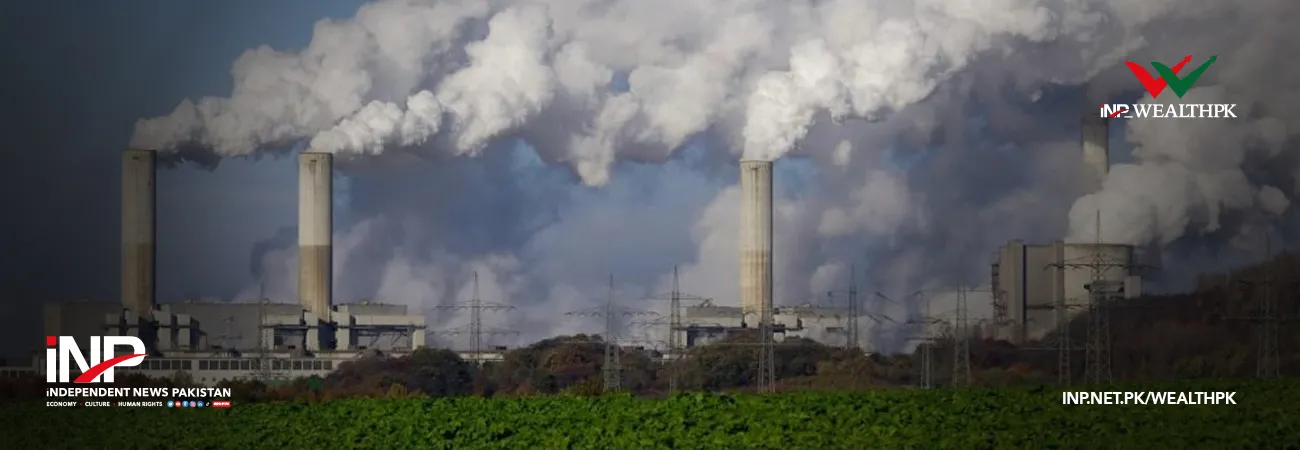INP-WealthPk
Faiza Tehseen
The Khyber Pakhtunkhwa government’s Carbon Stock Assessment and Marketing of Carbon Credits of Forests project is likely to fetch the country at least $140 million per annum through afforestation and forest conservation. Talking to WealthPK, Aitezaz Mahfooz, Divisional Forest Officer, Forestry Planning and Monitoring Circle, Peshawar, said the Pakistan Forest Institute, Peshawar, with the help of the forest department, had initiated the project in 2014. He said the first phase of the project ended in June 2021, and the second phase would continue till June 2026. “At the end of the project, the KP government will get in touch with the potential investor firms interested in buying carbon credits as part of the voluntary carbon marketing (VCM).
When the interested local/international firms and individuals are ready to invest after a proper presentation to show their interest in VCM, the KP government will move to disburse its benefits to individuals/communities under the Public-Private Partnership Act.”He pointed out that there was a different timespan to benefit from carbon credits from different types of forest zones. He said temperate zone forests, which are also called long rotation forests and mostly consist of conifers, remained for up to 80 years. “Mainly, Malakand and Hazara divisions have these forests. Forests in the subtropical/drain areas are fast growing and last for 30 years. And forests in tropical/arid conditions also remain almost for the same period as the subtropical ones.”
The forest official said if the individuals/communities agreed to retain the existing trees and carry out new plantations for a certain time period, the carbon credit benefit was disbursed every four years. “Normally, it is offered against two types of services, including plantation or afforestation, and conservation of already existing forests (addition to them is considered a more positive step as it arrests more carbon). Areas to be used for the said purpose have been divided into units, each representing 5,000 hectares.”
“If an individual or community is interested in selling their carbon stocks in their private forests, they have to pass a few stages according to standard measures, including preparation of a project design document, measurement reporting and verification, carbon stock assessment, calculation, and other important checks according to the guidelines set by United Nations Framework Convention on Climate Change,” he explained. “Launch of such plans will not only help generate income but will also contribute to efforts to decrease global warming to some extent,” said Aitezaz Mahfooz, who is also looking after the affairs related to carbon stock and credit marketing projects.
He pointed out that the flagship 10-Billion Tree Afforestation Project (10-BTTP) would add more revenue to the national kitty. He said the enhancement of forest cover under the 10-BTTP project held immense potential to sequester environmental carbon emissions. “Under this project, the total planted area is 150,000 hectares with estimated CO₂ sequestration potential for 20 years standing at 1,500,000 metric tonnes per year. It means that the total per year CO₂ captured in forests of Khyber Pakhtunkhwa will be 780,000 tonnes per year.” Mahfooz said KP consisted of 7.45 million hectares area, of which the forest area was 1.51 million hectares or 20.3% of the total area.
“The under-stocked degradation is about 78%, while the carbon stock is 150-160 million tonnes with sequestration per annum expected at 7.8 million tonnes against 6.6 million tonnes of annual carbon emissions.” He pointed out that there were nine different forest ecozones in the country with diversified ecosystems and different climatic factors, altitudinal variation and a multitude of flora and fauna. “Every ecozone has its own potential for carbon sequestration.” The divisional forest officer said KP had about 45% of Pakistan’s total forest cover and 51% of forest carbon stock. “The province also has the densest forests having 170 tonnes of carbon content per hectare. The afforestation of a one-hectare area means the reduction of at least 367 tonnes of carbon emissions.”
Credit: INP-WealthPk













